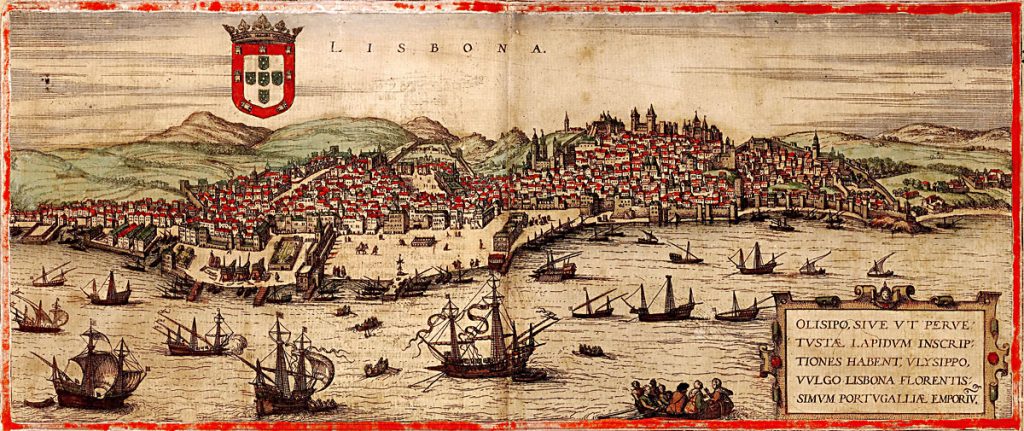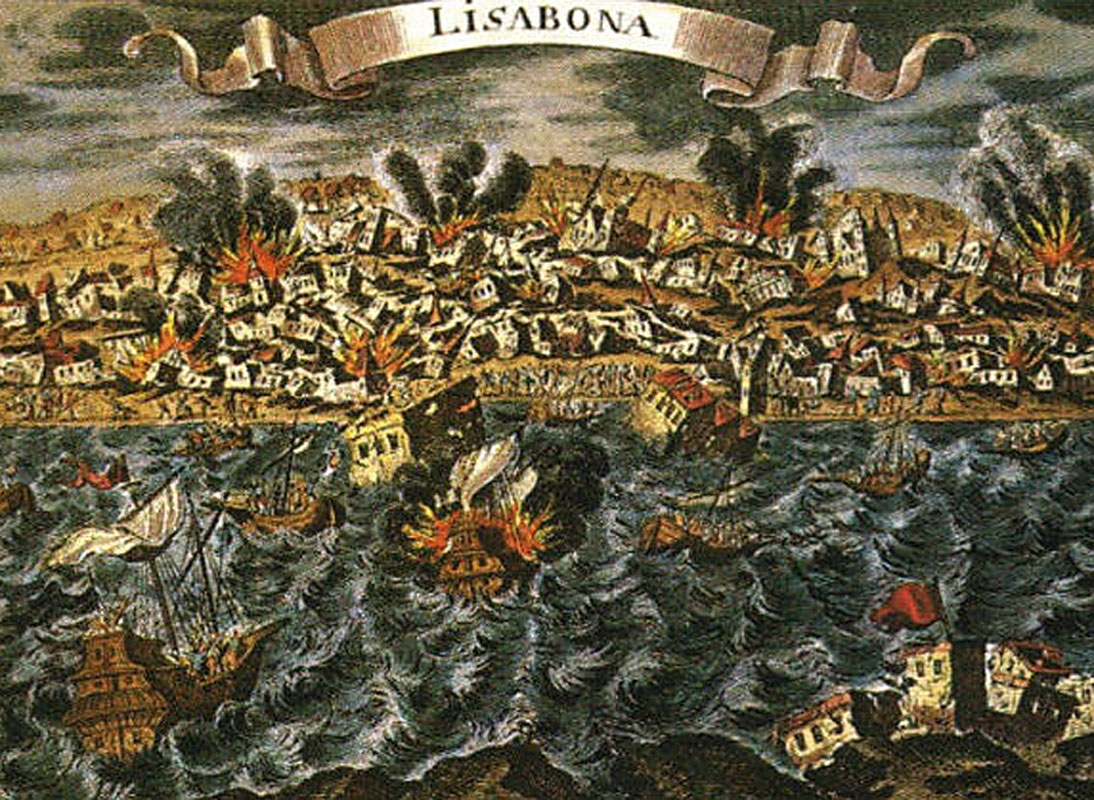Original article published on 26 January 2018
By giving our readers some insight into the history of Lisbon, we intend to contribute to a better understanding of its culture and people.
This city of great vitality and multiculturalism, despite all the adversities through times, it has always been able to be reborn from the ashes, keeping its peculiarities and traditions.
Get to know Lisbon’s historic neighbourhoods in a guided tour and discover unmissable places of this magnificent city.
In the Early Days
We start off with the intriguing information that geology shows us. Did you know that the region of Lisbon crossed a period of tropical climate in which a reef abundant in marine life was developed? After millions of years and with the change of climate, the lioz (a rare type of limestone that exists in the region of Lisbon and its surroundings) and the marble became testimonies of this fact. We constantly come across them without even noticing the marks of life printed on them. And it was with these testimonies, from the simple stone of the calçada (traditional Portuguese limestone pavement) to the sculptured stonework of the buildings that the city was built over time.
Although, the legend attributes the foundation of the city to Ulysses (the famous Greek hero), the history points us to the strong Mediterranean influence from Phoenician and Carthaginian origin. These were the peoples who, in this pleasant cove, Alis Ubbo, set up a trading post, Olissippo, where they promoted trade between the Mediterranean and the northern Europe.
Colonized later by Romans, Olissipo was considered an important city in its vast empire. For that reason, they built temples, thermal baths, a theatre and its first wall. At the same time, christianity expanded itself and many martyrs appeared in Lisbon, still present today in the toponymy of the city.
In the 5th century, it was invaded by warlike Germanic peoples, unleashing a dark period of wars, famine, and looting that would only end with the Arab occupation two centuries later. The people of Lisbon did not resist to the invasion of this new culture that was enchanted by the fertile lands, the vast orchards and by the thermal waters. They were able to recognise the great qualities of the region and develop its economic potential, returning the greatness that the city had once known.

After the Christian Reconquest, the Conquest of the World
The Arab occupation only ended in 1147 with the Christian reconquest, led by King Afonso Henriques, during the Siege of Lisbon. As a consequence, the city underwent a profound transformation, but the mark of its occupants of many centuries will always be a hardly erased inheritance.
Later on, the privileged geographical location of Lisbon, which links it to the World by the sea, has contributed to its moments of glory. Many were the reasons that encouraged the Portuguese people, intrinsically connected to the sea, audacious and adventurous, to cross seas and conquer the world. This expansion culminated in the reign of King Manuel I, in a time of opulence and dynamism. Lisbon was in its golden age, where people of different origins, rare products and exotic animals converged.


Decline and New Apogee

Paradoxically, this era was also the beginning of a period of crisis in the history of Lisbon. It was the time of the forced conversion of the Jews to New Christians, the Lisbon massacre and the royal request for the intervention of the Holy Office that would come to fruition in the following reign of King João III.
With the ascendancy of King Sebastião to the throne in 1568, the autos de fé (the act of faith – the ritual of public penance of condemned heretics and apostates) took place, and a new period of plague, famine and successive earthquakes began. Lisbon lived in constant fright and believed that it was facing a divine punishment provoked by the crisis of moral values. Simultaneously, successive losses of domains in Morocco led the young king to organize an expedition in order to regain them. The outcome was disastrous, culminating in a loss of independence that sent the kingdom to the periphery, to convulsion, and to war.
Portugal and in particular, Lisbon, only came to a new apogee in the reign of King João V (1689-1750) with the exploitation of gold resources in Brazil. In this period, Lisbon was target of numerous improvements in its infrastructures and grandiose constructions in the city and in its surroundings, giving rise to sculpture and architecture schools.
Unfortunately, many of these buildings succumbed on the 1st November 1755, with the violent earthquake and the tsunami and resulting fires.

Lisbon Reborn From the Ashes
With Marquês de Pombal (minister of King José I) and the Enlightenment, Lisbon was reborn from the ashes. Then, emerged the modern city designed for the future that we know today as the historical centre or Pombaline Downtown.
The beginning of the 19th century was a troubled period in the history of Lisbon, marked by civil wars and a weak industrial revolution. The implementation of a liberal regime, with the consequent restructuring in the socio-political organization of the State, namely the extinction of the Religious Orders and the incorporation of Church, Royal Family and Crown property into the Public Treasury, would have a determining effect in the destiny of the Portuguese cultural and patrimonial panorama.
Later on, the prolific artistic production of the generation of 70, particularly at the level of literature and visual arts, left in Lisbon its mark. In the cafes and bookstores, many of which still exist today, lively intellectual gatherings took place and the city in general served as a scene of indispensable literary works of this period.
In the first decade of the 20th century, Lisbon was once again, stage of relevant events. In 1908, the terror of the regicide that occurred in Terreiro do Paço, gave place, two years later, right next to it, in the balcony of the Câmara Municipal (city council), to the Implantation of a Republic, which was ideologically welcomed but proved to be troubled and short.

However, what marked the 20th century was the long period of 48 years of dictatorship that resulted from a military coup in 1926. Despite some apparent development in terms of infrastructures and controlled Modernism, the main legacies of this regime were a long-standing Colonial war and cultural and economic backwardness that only came to an end with the revolution of April 25, in 1974.
Forty years after the implantation of the democratic regime, we find Lisbon open to the world.
Mixed with tradition and modernity, the population of Lisbon welcomes every visitor with sympathy and pride.
| Never miss another article | Subscribe here |
The project getLISBON has been very rewarding and we want to continue revealing the singularities of fascinating Lisbon.
Help us keep this project alive!
By using these links to make your reservations you’ll be supporting us. With no extra costs!
• Looking for a different experience? We can create a customised itinerary based on your interests. Contact us!
• Or if you prefer tours and other activities in various destinations, take a look at GetYourGuide.
• Save time and money with a flexible Lisbon Card!




